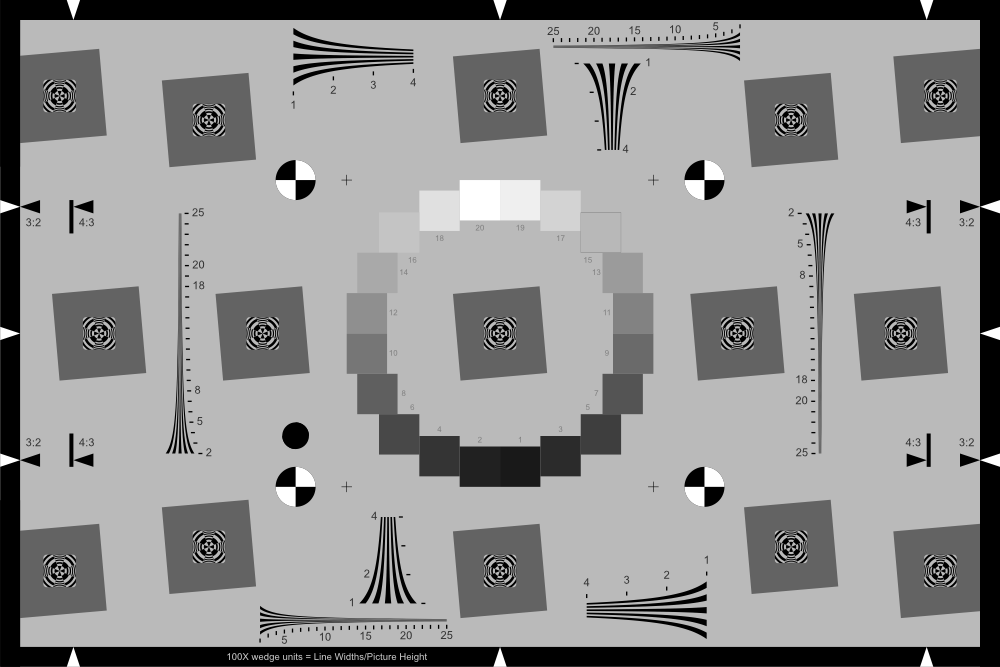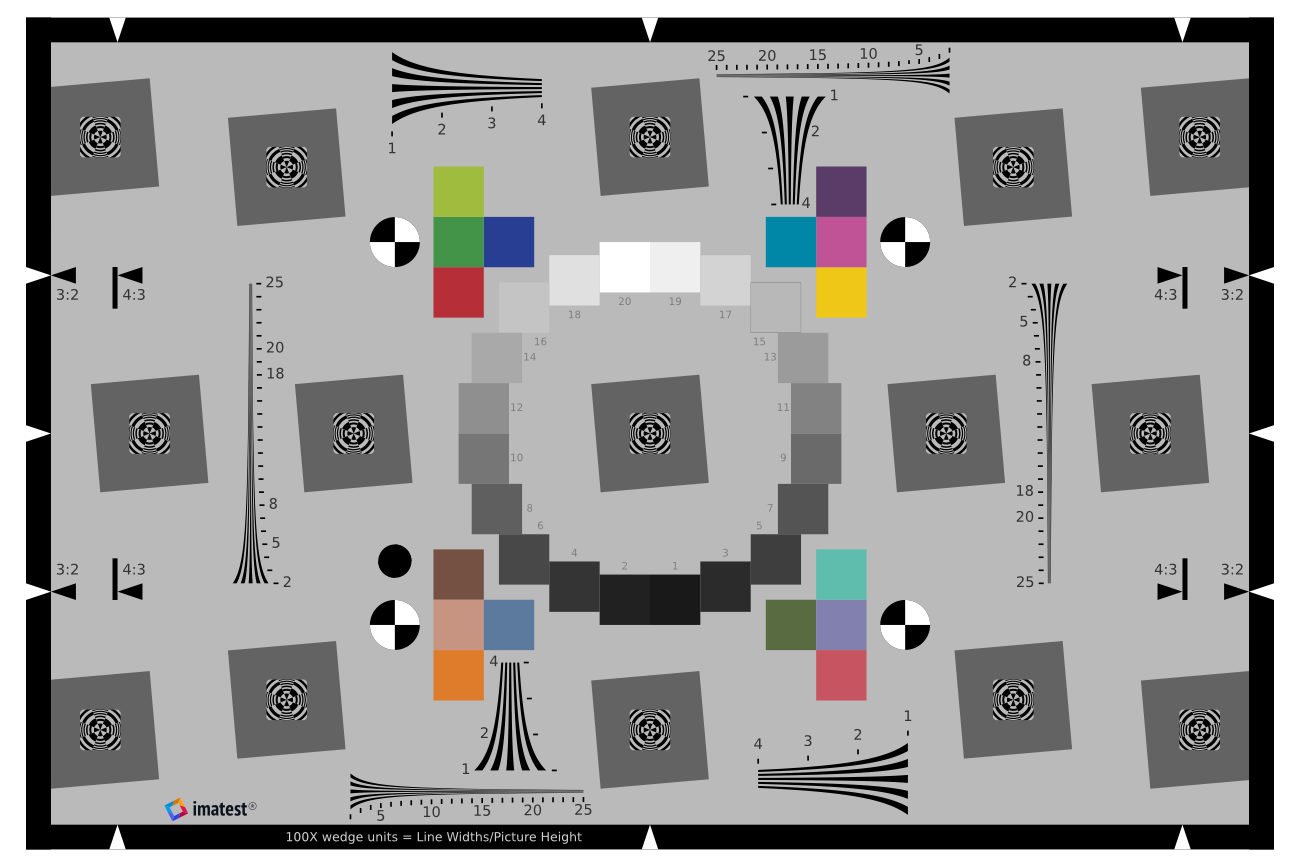$1,260.00 – $2,030.00
Imatest ISO 12233:2017 E-SFR charts are implementations of the Low Contrast Edge SFR (eSFR) test chart illustrated in Section 6.1 and Annex C of the ISO Standard Document. We offer the Enhanced version of this chart in high resolution photographic prints, suitable for high resolution sensors up to 54MP at the 4x size.
All Imatest ISO 12233:2017 eSFR charts are fully compliant with the ISO standard. The Imatest eSFR ISO module provides highly automated support for the new charts. Please contact us for Extended version photographic prints, additional details below.
This high precision chart has a glossy surface that will require proper lighting placement in order to avoid specular reflection.
Lead Time
Standard lead time for this chart is two weeks for black & white and four weeks for color versions.
Description
Video (Watch on our site)
| Chart Sizes | Active Area | Megapixel Suitability * |
|---|---|---|
| 1x | 200mm × 305mm (7.875″ × 12″) |
3.4mp |
| 2x | 400mm × 610mm (15.75″ × 24″) |
13mp |
| 4x | 800mm × 1220mm (31.5″ × 48″) |
54mp |
* As measured to the interior of the black border.
ENHANCED VERSION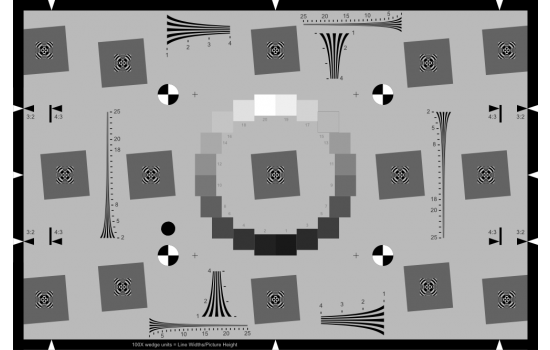
The Imatest Enhanced ISO 12233:2014 E-SFR chart has all the features of the Standard chart, keeping the 3:2 aspect ratio, with the addition of six added slanted squares for measuring performance near the image boundaries and hyperbolic wedges for visual analysis or analysis with the Imatest Wedge module.
The differences between the Imatest charts and the chart illustrated in the standard are listed below. Even with these differences the Imatest chart is in full compliance with the standard.
- A 20-patch OECF grayscale pattern* is used as opposed to the 16-patch version.
- The Focus Patterns in the centers of the squares are rectangular (to increase the MTF measurement area) and are designed to reduce interference with automatic edge detection.
- There are four registration marks instead of three to facilitate automated region detection. (Four features are required for a projective transform.)
- An additional mark above the lower-left registration mark is used for detecting chart orientation.
The differences between the Enhanced and Standard Versions are as follows:
- Six extra slanted squares are added for measuring performance near the image boundaries.
- Several hyperbolic wedges with spatial frequencies, similar to the CIPA chart referenced in the ISO standard, for visual analysis or use with the Imatest Wedge module.
- 16 color patches when produced with technologies that allow color (inkjet or color LVT), with colors similar to the industry-standard 24-color test chart.
This chart will work with the fully-automated eSFR ISO module, starting with the Imatest 4.0 release.
Extended Version (not currently available)
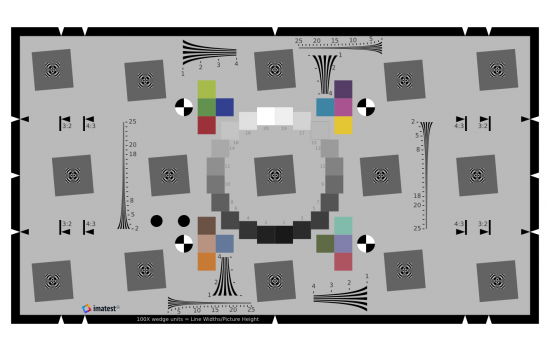
The Imatest Extended ISO 12233:2014 E-SFR chart has all the features of the Enhanced chart (six extra squares, and wedges), but has a 16:9 aspect ratio, which makes it suitable for HDTV and cinema measurements (and it also works well with 3:2 aspect ratio DSLRs). It is fully compliant with the standard.
This chart will work with the fully-automated eSFR ISO module, starting with the Imatest 4.0 release.
Megapixel Quality Ratings
Megapixel suitability is based on analysis of Modulation Transfer Function (MTF) obtained from a chart image captured using a 1:1 magnification lens (Canon 65mm f/2.8 1-5x macro) and a 6.5µm pixel size sensor (Canon EOS 6D). In order to consider performance throughout the cameras range of expected sharpness, MTF90 (the spatial frequency where MTF is 90%) is weighted at 0.5, MTF70 is weighted at 0.35, and MTF50 is weighted at 0.15. Conversion to megapixels is based on the Imatest Chart Quality Index (CQI) calculation which determines sensor height suitability using the equation 2 * MTFxx (cycles per object mm) * vertical chart height (mm), where xx is 90, 70 or 50. Megapixel suitability calculations assume that (1) the lens is of high quality, (2) that the chart fills the vertical field of view (vFoV) of the camera system, and (3) that the sensor aspect ratio is 3:2. For 16:9 aspect ratio sensors (with pillarboxed framing, if applicable), multiply the megapixel suitability by 1.185. For 4:3 aspect ratio sensors (with left/right sides of chart cropped), multiply megapixel suitability by 0.889. Charts can be suitable for significantly higher megapixel counts if the minimum resolvable feature size of the lens is larger than the pixel size or the chart fills less than the full sensor vertical field of view.
Documentation and software support
eSFR ISO can be run either through the highly-interactive Rescharts interface or as a batch-capable fixed module. The key documentation for getting started is Using eSFR ISO Part 1, found in the eSFR ISO section of the Documentation page. Badly-framed charts can be analyzed with SFR using manual ROI selection.
You may also like…
-
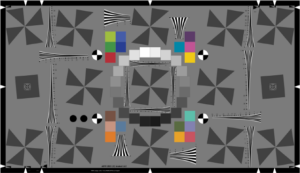
ISO 12233 Test Charts on Color High-Precision LVT Film
$600.00Select options This product has multiple variants. The options may be chosen on the product page


